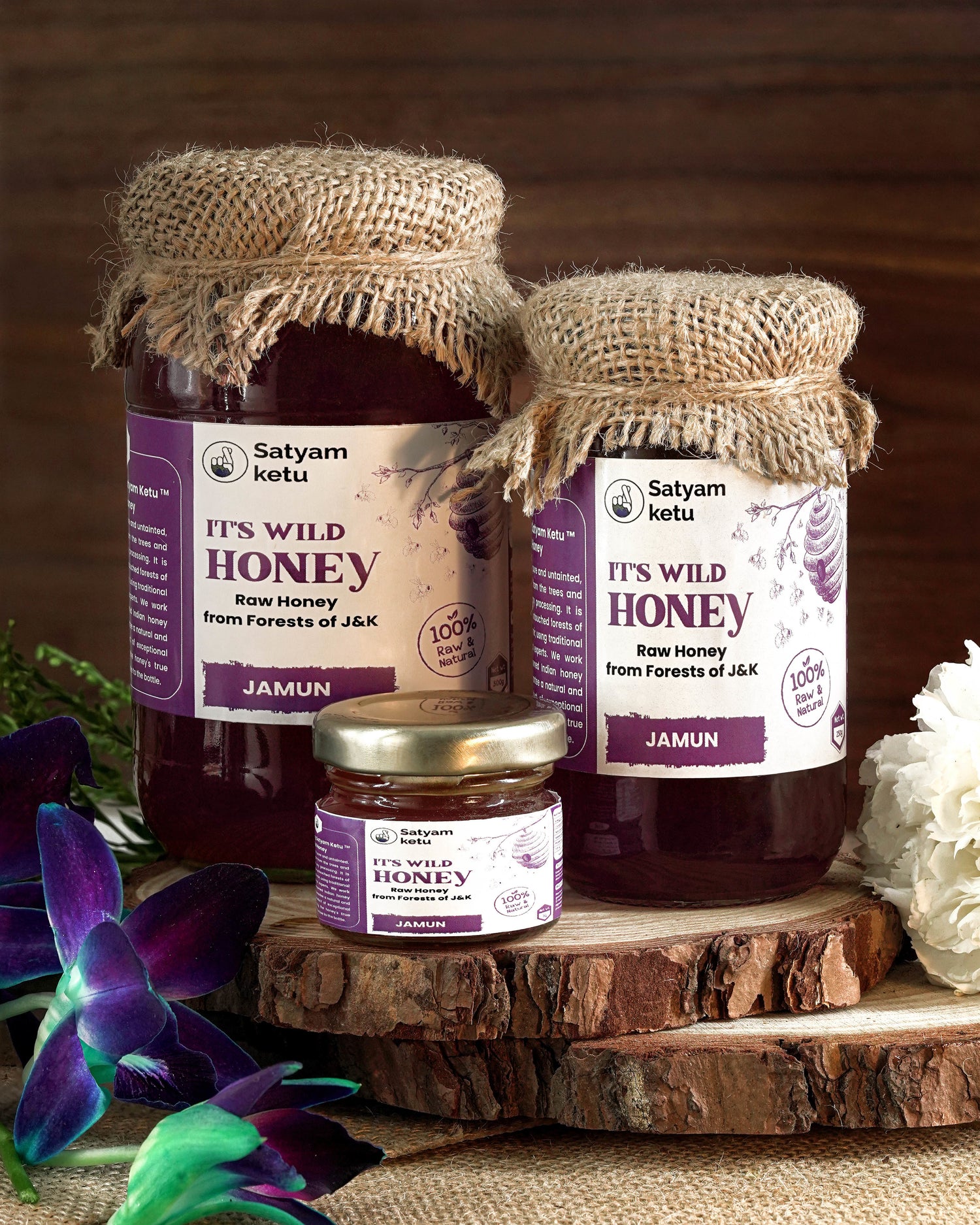HARVESTED WITH HEART, SHARED WITH CARE
At Satyam Ketu, we're on a mission to bring you the finest wild honey nature has to offer. We traverse remote landscapes, from lush forests to untouched meadows of Jammu & Kashmir, connecting with tribal harvesters who have mastered the art of gathering this liquid gold. Our bees thrive in their natural habitats, and we carefully harvest their golden nectar to deliver a taste of unspoiled wilderness to your table.
Discover the unparalleled richness and authenticity of wild honey with Satyam Ketu
NATURE'S GOLD UNVEILED
-
Flora Hills Wild Honey
Vendor:Satyam KetuRegular price From Rs. 49.00Regular priceUnit price / per -
Jamun Wild Honey
Vendor:Satyam KetuRegular price From Rs. 49.00Regular priceUnit price / per -
Multi Flora Wild Honey
Vendor:Satyam KetuRegular price From Rs. 49.00Regular priceUnit price / per -
Sulai Raw Honey
Vendor:Satyam Ketu™Regular price From Rs. 49.00Regular priceUnit price / per
Collection
POPULAR QUESTIONS

Honey Difference: Wild vs Bee keeping ?
Wild Honey:
- Source: Harvested from natural, wild environments like forests, jungles, or meadows.
- Flavor Profile: Varied and influenced by the diverse flora in the area, resulting in unique and complex flavors.
- Processing: Typically less processed with minimal filtration, preserving natural pollens and enzymes.
- Sustainability: Harvesting wild honey is sustainable when done responsibly, contributing to the ecosystem.
Beekeeping Honey:
- Source: Produced by domesticated bees in managed hives, often near agricultural areas.
- Flavor Profile: The flavor is influenced by the specific flowers the bees forage on, offering a distinct taste profile.
- Processing: Depending on the beekeeper, honey may undergo filtration and pasteurization, removing impurities.
- Sustainability: Beekeeping, when practiced sustainably, supports pollination and agricultural ecosystems.
Both types have their merits; wild honey may offer a taste of diverse ecosystems, while beekeeping honey provides consistency and supports local agriculture. The choice often depends on personal preferences and considerations for environmental impact.
Is crystal honey pure or fake ?
Crystallization of honey - is a natural process of 100% pure honey. Honey is a supersaturated solution made up of two natural sugars: glucose and fructose.
The proportions of these two sugars are characteristic of the plants the bees fed on to make their honey. It's the glucose that crystallizes, so some types of honeys are more resistant to crystallization because they have low glucose:
The truth is crystallization of honey is a natural and uncontrolled process. ... During crystallization, glucose sugar which is naturally pure white, separates from water and becomes crystals, while fructose remains as a liquid.
It's the over processed, commercial blended honeys that do NOT crystallize.
Crystallised honey has been tampered with (by adding sugar or jaggery)
Honey crystallises in cold weather due to its glucose content. Simply placing the jar in warm water brings it back to its liquid state. In fact, in certain parts of the world, crystallised honey is used like a jam.
Why is our honey only filtered once?
Single filtration of honey refers to the process of passing raw honey through a filter one time to remove larger particles such as debris, bee parts, and wax.
This minimal filtration retains more of the honey's natural qualities, including pollen and enzymes, making it a less processed and more wholesome product compared to heavily filtered or ultra-purified honeys.
Sustainable Packaging: Glass vs Plastic ?
The first step to saving the planet is to start recycling and using sustainable material.
We use foil grade glass jar to keep the real taste of all our honey intact. Even our smallest 50 gm honey variant is subjected to glass packaging.
It limits the use of resources significantly. It positively impacts and supports our business goals.









